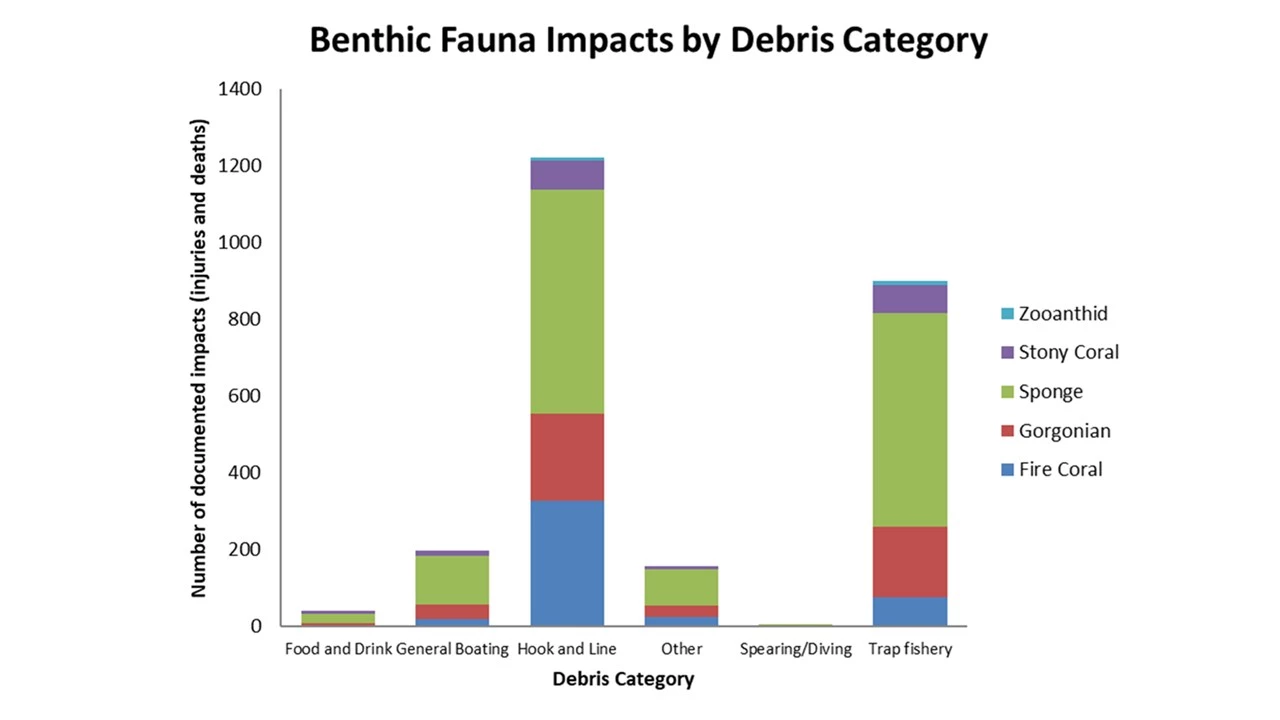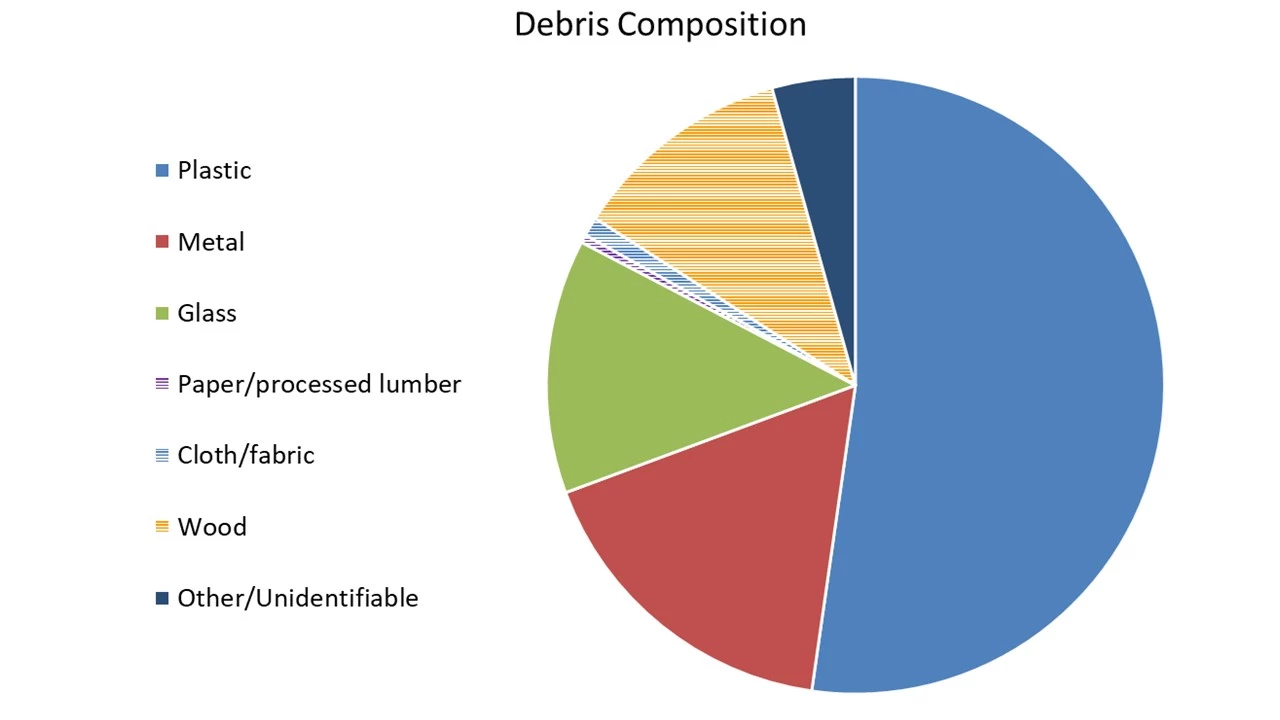Part of a series of articles titled Resource Management Efforts in Biscayne.
Previous: Lionfish in Biscayne National Park
Article

NPS Photo
Most of the pollution in Biscayne National Park found in our marine and coastal habitats is made of plastic.
Some pollution is intentionally (and illegally) dumped in the park; some is unintentionally released.
Sources of the pollution are varied and include items such as lost lobster or crab traps, fishing line, anchors, balloons, glass bottles and other trash.
Much of the debris that washes ashore onto park coastlines comes from all over the globe.
How does Marine Debris affect park resources?
Marine debris can entangle and/or entrap all kinds of wildlife. This can lead to physical injuries (such as lacerations and broken bones), infections, suffocation, and drowning.
Animals can unintentionally consume pollution while foraging, which can often kill them. Balloons are often ingested by sea turtles mistaking them for their preferred food, jelly fish.
Plants and stationary animals (such as corals and sponges) can be smothered, broken, uprooted, and otherwise injured or killed by contact with pollution by lost trap and fishing gear, anchors and lobster or crab traps.

NPS Photos
Accumulations of marine debris can diminish habitat quality and affect nesting, feeding and other basic behaviors and movements of wildlife.
Over time, plastic debris breaks down into smaller and smaller pieces (microplastics), which is not only harder to remove from the environment, but which becomes more likely to be accidentally ingested by wildlife.
A highly polluted area is disappointing and upsetting for visitors to a national park.

NPS Photo
Resource managers document total weight of debris removed for each daily effort, and also maintain long-term records on tallies of specific types of debris removed.
Since 2008, , through 2022, the park has removed a conservatively estimated 575,000 pounds (almost 288 tons!) of pollution. In the past couple of years, the amount has been 70,000 pounds annually.
In the last 5 years, park staff have removed 1,444 anchors, 3047 balloons, and 1,910 trap throats (the plastic entry way into wooden or metal wire lobster and crap traps). See Pictures and reference

NPS Photo
Park biologists have examined debris quantities and sources, impacts on organisms, and accumulation rates on coral reefs in the park. Park studies have found that plastic makes up 52% of reef debris items, 65% of mangrove debris items and 81% of beach debris items.
Studies by park biologists have indicated that recreational fishing gear (i.e., monofilament fishing line) causes the most injuries to coral reef organisms, while commercial trapping gear (i.e., derelict traps and trap line) causes the most deaths.
Get involved!
Spread the word how pollution affects the park
Pack out all that you bring into the park
Biscayne welcomes Volunteers-In-Parks to assist with beach clean-ups. Check out www.volunteer.gov or email e-mail us.
If you see something, say something! Report to park staff any observations of illegal dumping, noteworthy accumulations of debris, and wildlife negatively affected by pollution.

NPS Graph

NPS Graph
Part of a series of articles titled Resource Management Efforts in Biscayne.
Previous: Lionfish in Biscayne National Park
Last updated: September 6, 2023